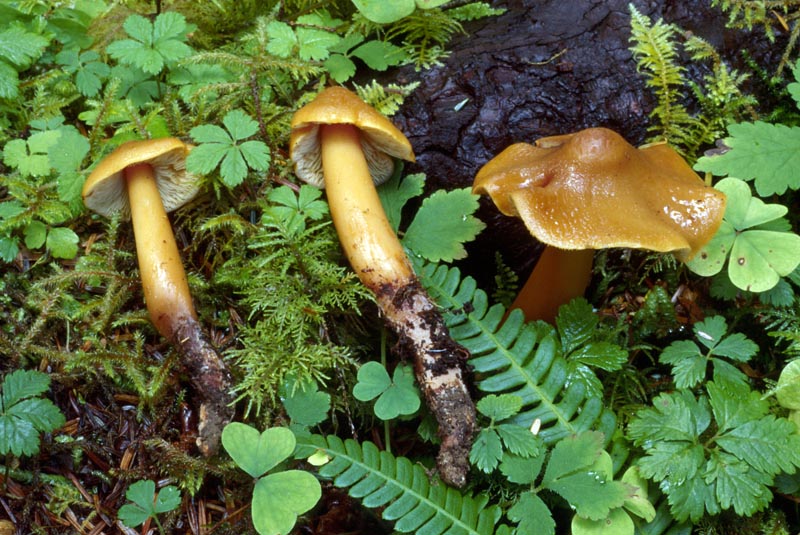Habitat: It is somewhat common in southern B.C., occurring as solitary individuals or groups in old-growth forests with abundant Sitka spruce.
Conservation Status: Not of concern
Phaeocollybia piceae is similar in size, stature, and habit to P. lilacina, but differs in coloration and other less obvious features. The cap is bright orange to red-orange and moist to viscid when young; the young gills are pale orange. The odor is mild or somewhat penetrating. The stipe gradually narrows downward, but does not become hair-like; it is orangeish when young, longitudinally lined, sometimes shiny, and becomes stuffed with cottony pith when mature. The spores are lemon-shaped, distinctly roughened, and about 9.5 µm long; the cheilocystidia thin-walled and cylindrical to slightly club-shaped; clamp connections are absent.
PNW Herbaria: Specimen records of Phaeocollybia piceae in the Consortium of Pacific Northwest Herbaria database
CalPhotos: Phaeocollybia piceae photos



